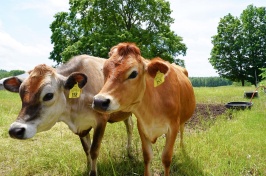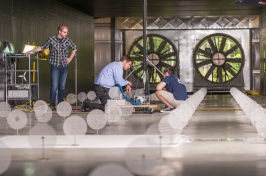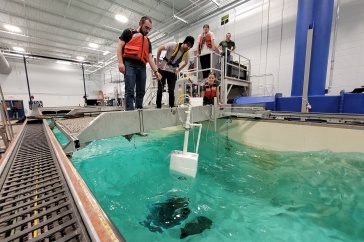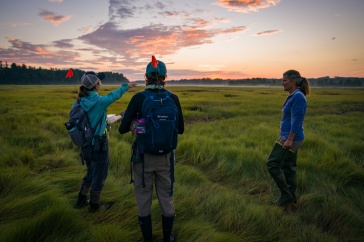New Englanders searching the woods for chestnuts to roast on an open fire this holiday season will be hard pressed to find a mature American chestnut tree bearing nuts. American chestnut has been under attack for a century from a persistent chestnut blight that has killed trees from Georgia to Maine and west to the Ohio River Valley.
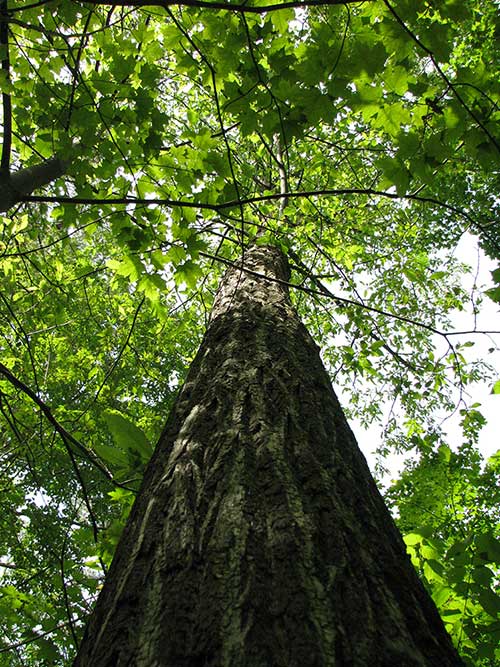
However, a potentially blight-resistant American chestnut tree plantation planned for the University of New Hampshire may one day mean that the tree that was once prominent in eastern North America — numbering in the billions — may again be common in this region’s forests.
UNH is in the initial stages of establishing an American chestnut tree plantation at Kingman Farm in Madbury. The effort is a joint project between the NH Agricultural Experiment Station and The American Chestnut Foundation. Steve Eisenhaure, land use coordinator with the UNH Office of Woodlands and Natural Areas, is overseeing the one-acre project. UNH will plant 350 trees at the farm.
“Chestnut trees still can be found in our area, but they no longer reach the mature stage because of the blight. There are ecological implications with the fact that the chestnut is gone from our forests,” said Eisenhaure, who manages UNH’s 3,500 acres of wooded area.
According to The American Chestnut Foundation, historically, the American chestnut was an important tree to the Eastern deciduous forest landscape. The trees grew very large and produced wood that resisted rot and was highly valued for building and furniture-making. The nuts provided food for people and were a critical food source for a wide variety of animals from birds to bears. The loss of the American chestnut in the Eastern forests drastically changed the diversity of these ecosystems.
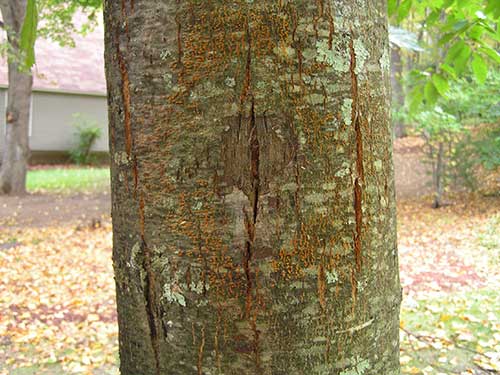
Chestnut blight, a fungal disease, has hit American chestnuts hard and was first seen in eastern North America about 100 years ago. Chestnut blight is believed to have been accidentally introduced into North America on imported Asiatic chestnut trees in the late 1800s and was first identified as an exotic pathogen in 1904.
“We are planning to plant trees that have been crossbred with blight-resistant strains of the tree. This is the first step in developing an area that our researchers in the future can study and draw material from,” Eisenhaure said.
Researchers will plant American chestnuts that have been bred to incorporate the blight resistance of the Chinese chestnut while retaining as much of the American chestnut’s natural character as possible, using the backcross method of breeding. This method takes advantage of the Asiatic chestnut tree’s resistance to chestnut blight but allows for the incorporation of more American chestnut genetics through multiple generations of breeding. By introducing the blight-resistant genes from the Chinese chestnut into the American chestnut, and then repeatedly crossbreeding subsequent blight-resistant American chestnuts with additional native American chestnuts, The American Chestnut Foundation has developed a population of trees that are between 94 and 97 percent American chestnut and potentially blight-resistant enough to survive long-term in the forest. These trees took more than three decades of careful breeding to produce and are what will be planted at Kingman Farm.
The American chestnut tree plantation will be UNH’s fourth research plantation at Kingman Farm. The farm already has white pine seed, red spruce and pitch pine plantations that are used by researchers with UNH and the U.S. Forest Service as well as for outreach and education.
According to Kendra Collins with The American Chestnut Foundation, American chestnut trees can start producing chestnuts anywhere from five to 15 years in age, depending on conditions.
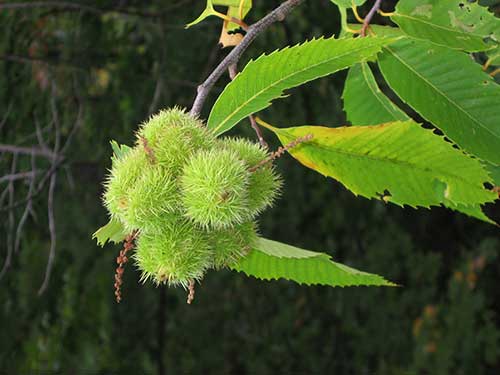
“With American chestnut reintroduction on the horizon, we need to learn more about the best ways to get these trees back on the landscape. This project will help to inform those efforts and also involve students in planting, data collection and management. This is a long-term project, and it’s important to engage the next generation of forestry and natural resource professionals,” Collins said.
“The mission of The American Chestnut Foundation is to restore the American chestnut tree to eastern forests. This is a big restoration goal, and we can't do it alone. Partnerships, like this one we have established with UNH, are of great value to our program and to the success of American chestnut restoration,” she said.
-
Written By:
Lori Tyler Gula, PhD | NH Agricultural Experiment Station | lori.gula@unh.edu | 603-862-1452






























